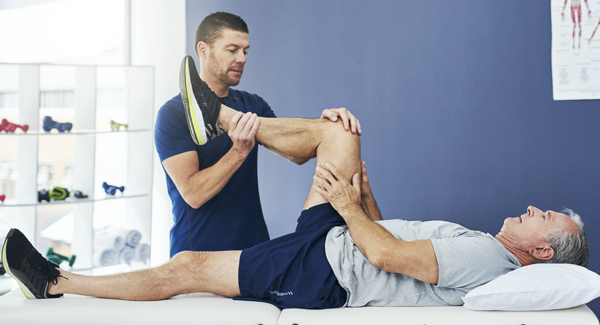Are you sick and tired of having persistent joint pain? Do you discover that the discomfort makes you avoid activities you used to enjoy? It is time to consider physical therapy as a vital instrument for controlling joint discomfort. Whether you have arthritis, a sports injury, or a chronic illness, physical therapy can increase mobility, alleviate pain, and improve your quality of life. Depending on the underlying reason for your joint discomfort, Asher Goldstein MD can suggest several treatments.
Before understanding the role of physical therapy in controlling joint pain, it would be wise first to understand the causes of joint pain. Various conditions, such as diseases, accidents, and everyday wear and tear, can bring on joint discomfort.
These are some of the causes of joint pain:
· Arthritis is a group of diseases that cause inflammation and damage to joints. The most prevalent variety is osteoarthritis, which develops as the cartilage cushions the joint’s age.
· Injuries: Sprains, strains, and fractures can all cause joint pain, depending on the severity and location of the injury.
· Overuse: Repeated use of a joint can cause it to become inflamed and painful. This frequently occurs in people who have physically demanding jobs and athletes.
· Autoimmune diseases: Conditions such as rheumatoid arthritis and lupus cause the immune system to attack the body’s tissues including the joints.
· Infections: Certain infections can lead to joint pain, such as Lyme disease and septic arthritis.
Roles of physical therapy in joint pain management
· Evaluation and assessment: Physical therapists’ primary responsibility in treating joint pain is to diagnose and evaluate patients. The expert will evaluate your joint function, range of motion, strength, and flexibility. Based on the exam, the therapist will create a unique treatment plan for you.
· Pain management: Different methods are employed by physical therapists to treat joint pain. These methods include massage, manual therapy, heat or cold therapy, and electrical stimulation. The therapist will also give exercises to assist the muscles around the injured joint to become stronger, which can lessen pain.
· Rehabilitation: Physical therapy can be extremely important in the rehabilitation process when an injury, surgery, or a chronic illness brings on joint discomfort. The patient will work with the physical therapist to regain their strength, range of motion, and flexibility in the injured joint. Stretching, strength training, and activities to help with range of motion may all be part of this.
· Education: Physical therapists play an essential role in educating patients on how to manage joint discomfort. The patient will learn exercises and procedures from the therapist to assist in controlling joint pain and stop additional harm. Additionally, they could offer advice on modifying one’s lifestyle to help with joint discomforts, such as losing weight or altering daily routines.
· Prevention: Physical therapy can also aid in preventing the onset or aggravation of joint discomfort. The physical therapist will offer tips on good body mechanics and posture to lower the chance of joint damage. They might also offer exercises to strengthen the muscles surrounding the joints and reduce the risk of damage.
Do not hesitate to discuss the possibility of physical therapy with your healthcare practitioner at Zephyr Medical if you are suffering from joint discomfort.











Leave a Reply